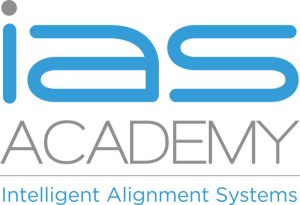Aligning visions
Featured Products Promotional FeaturesPosted by: Dental Design 5th August 2022

At the heart of the profession, the desire is always the same among clinicians; satisfy patients and deliver exceptional results every time.
With your clinical judgement, knowledge and skill, you’re able to visualise what will work best for the patient, while ensuring they receive their desired results. But your vision for treatment may clash with that of the patient’s, especially when you consider expectation, motivation and clinical understanding from a patient perspective.
These are all interlinking considerations that could have an impact on the outcome of the procedure. Communicating effectively and employing tools that will aid engagement will help to deliver suitable treatment, satisfying the patient’s desires and ensuring optimal results.
Expectation and motivation
Social media may present as both a blessing and a curse for clinicians. On the one hand, platforms such as Instagram have been shown to be an effective method for increasing knowledge in young patients with fixed appliances.[i] The rise of social media may have simplified how patients access information, but it has also ushered in a hotbed of issues surrounding body image and self-confidence, which can distort a patient’s expectation regarding orthodontic therapy. There is much literature on the topic of exposure to online content and negative emotional and mental consequences; for instance, one study[ii] found that young online users may experience greater body dissatisfaction when engaging with social media, and vice versa.
How can this affect treatment? Many patients may believe that orthodontic therapy is a ‘quick fix’, but fail to realise that there are many considerations that are factored into the equation. Firstly, the severity of their malocclusion may mean that their treatment requires extra steps to achieve the final result safely and effectively. For example, in some cases where there is severe crowding present, tooth extraction may be clinically necessary in order to align the smile successfully.
Additionally, the patient may not realise that the condition of their oral health plays a monumental role in the success of the procedure. Frustratingly, you may encounter many patients who smoke and/or drink heavily, or who have poor dietary habits that have adverse effects on their oral health. They may not fully understand that fixed orthodontic therapy (or, indeed, any dental treatment) cannot go ahead if they present with poor oral hygiene.
Understanding
In addition to external influences affecting patient expectation, their own understanding and education regarding compliance can also determine the outcome of the procedure.
You may see patients who have done their research, and have an understanding of what the procedure entails, as well as their own role during and after. However, there will be as many if not more who do not recognise the importance of excellent oral health in the outcome of their treatment. They will have to be prepared to limit, or give up entirely, certain habits that could increase the risk of a decline in oral health. Similarly, it is vital that they understand that orthodontic therapies such as fixed braces do put them at a higher risk of developing certain issues, such as white spot lesions (WSLs)[iii] and plaque accumulation,[iv] which will only be exacerbated by bad habits.
Patients must understand that orthodontic therapy is more than simply putting an appliance on the teeth and removing it once the teeth are straight. Patients have to comply with the advice from their clinician, in order to optimise the outcome and ensure longevity of the final result.
In harmony
In an age of immediacy, where things can be accessed or achieved almost instantaneously, managing expectations and educating patients is perhaps a lot more challenging than it once was. But dental professionals are in an ideal position to help patients visualise their final look, within the borders of an appropriate treatment pathway.
Communication helps to establish a positive rapport, and ensures that the patient is confident and comfortable to go ahead with the procedure. It gives them the tools they need to make the right decisions, as well as helping to fill in any gaps they may have in their knowledge. Visual aids, such as software and clinical photography only further enhance patient engagement and understanding. Advancing your own education is another way to improve patient education and the management of expectations, as well as helping to ensure your skills are up-to-date and keeping you abreast of emerging trends and conversations within the field.
Build on your skill
IAS Academy is dedicated to educating and empowering dental professionals, with their global community of passionate, world-class teachers and outstanding courses. With varying timeframes and topics, these comprehensive learning programmes are perfect for professionals at different levels in their career, and everyone receives support and governance to keep them clinically safe, during and after the course. This stable support network is designed to give professionals the confidence to deliver exceptional treatment, safely and competently.
With so much false information, social influences and a lack of understanding, aligning your vision with that of your patients can be challenging. But, communicating effectively will help to manage expectations, educate patients successfully and deliver outstanding results every time.

For more information on upcoming IAS Academy training courses, please visit www.iasortho.com or call 01932 336470 (Press 1)
[i] Scribante, A., Gallo, S., Bertino, K., Meles, S., Gandini, P. and Sfondrini, M.F. (2021). The Effect of Chairside Verbal Instructions Matched with Instagram Social Media on Oral Hygiene of Young Orthodontic Patients: A Randomized Clinical Trial. Applied Sciences, [online] 11(2), p.706. Available at: https://www.mdpi.com/2076-3417/11/2/706/htm [Accessed 17 May 2022].
[ii] Charmaraman, L., Richer, A.M., Liu, C., Lynch, A.D. and Moreno, M.A. (2021). Early Adolescent Social Media–Related Body Dissatisfaction. Journal of Developmental & Behavioral Pediatrics, [online] Publish Ahead of Print. Available at: https://www.ncbi.nlm.nih.gov/pmc/articles/PMC8196598/ [Accessed 17 May 2022].
[iii] Jing, D., Hao, J., Shen, Y., Tang, G., Lei, L. and Zhao, Z. (2019). Effect of fixed orthodontic treatment on oral microbiota and salivary proteins. Experimental and Therapeutic Medicine. [online] Available at: https://www.spandidos-publications.com/etm/17/5/4237/abstract [Accessed 17 May 2022].
[iv] Chen, I., Chung, J., Vella, R., Weinstock, G.M., Zhou, Y. and Jheon, A.H. (2021). Alterations in subgingival microbiota during full‐fixed appliance orthodontic treatment—A prospective study. Orthodontics & Craniofacial Research. [online] Available at: https://onlinelibrary.wiley.com/doi/abs/10.1111/ocr.12534 [Accessed 17 May 2022].










